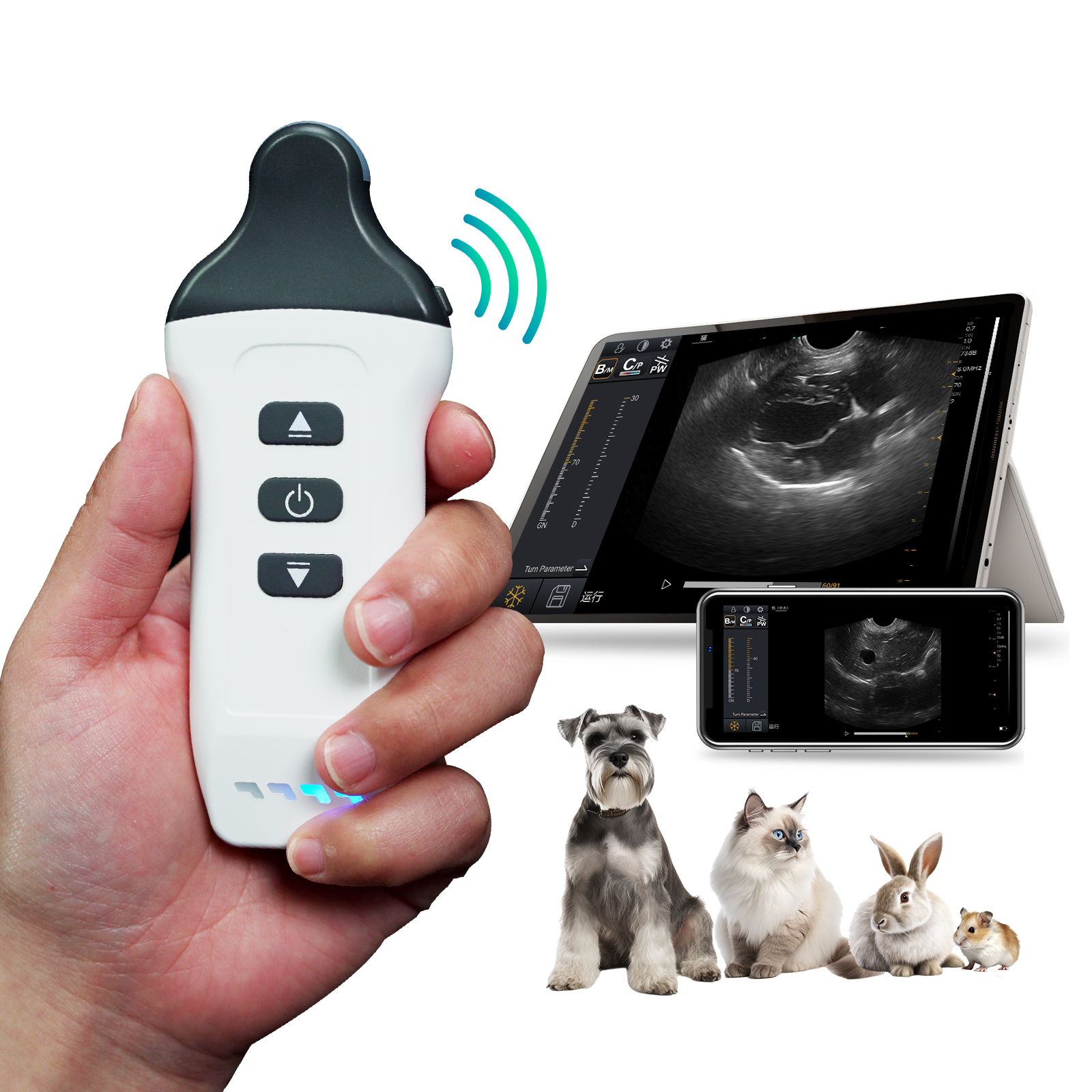With the continuous progress of veterinary medicine, veterinary wireless ultrasound equipment is becoming an important tool for veterinary diagnosis. The portability and efficiency of wireless ultrasound provide veterinarians with more flexible and accurate diagnostic means. In this article, we will discuss the advantages of veterinary wireless ultrasound and its application scenarios, and introduce some of the major products in the market.
Advantages of Wireless Veterinary Ultrasound
1. Portability
Wireless ultrasound devices are usually small and lightweight, and can be easily carried to different workplaces. This portability is extremely important for veterinarians who need to move around a lot, especially on farms, in the field or in family practice. For example, the Vscan Air™ is a dual probe, lightweight wireless ultrasound system that can perform up to 50 minutes of scanning, making it ideal for use in a variety of environments (SOUND).
2. Efficiency
Wireless ultrasound devices provide high-quality images for more accurate diagnosis, and Clarius wireless ultrasound devices utilize AI-driven applications that automatically provide optimal imaging for a variety of veterinary diagnostic scenarios, such as the diagnosis of pleural effusions and renal obstructions (Clarius Ultrasonics). The Clarius Ultrasonics is an easy to use, easy to clean and easy to maintain device.
3. Easy cleaning and maintenance
With no cables, cleaning and disinfecting the device is easier and faster. This is especially useful when working with multiple animals and reduces the risk of cross-contamination.
4. Ease of operation
Many wireless ultrasound devices are designed to be intuitive and simple to use, and Konica Minolta’s PocketPro H² has a one-button interface that allows one-handed operation, greatly simplifying clinical diagnostics (Applied Radiology).
Veterinary wireless ultrasound applications
1. Routine health checks
Veterinarians can use wireless ultrasound devices to conduct routine physical examinations to detect the health status of the animal’s internal organs. For example, gastrointestinal diseases, liver diseases and urinary problems can be detected during routine examinations.
2. Trauma and emergencies
In emergencies, such as trauma or acute illness, portable wireless ultrasound devices can quickly provide high-quality images to help veterinarians make quick and accurate diagnosis and treatment decisions.
3. Pregnancy monitoring
Wireless ultrasound devices can be used to monitor the course of an animal’s pregnancy, assess the health of the fetus, and provide early intervention when necessary.
4. Surgical assistance
During surgical procedures, wireless ultrasound devices can provide real-time images of internal organs to help veterinarians perform surgical operations more accurately.
5. Farm and field applications
On farms and in the field, veterinarians can utilize wireless ultrasound devices to perform on-site diagnostics without having to bring the animals back to the clinic, thus saving time and resources.
Dawei Wireless Veterinary Ultrasound Series
The Dawei Veterinary Wireless Ultrasound Series is known for its high image quality and portability for a variety of veterinary diagnostic scenarios. Dawei’s products not only provide excellent imaging capabilities, but also support a wide range of intelligent features that make veterinary diagnosis more efficient and accurate.
Conclusion
Wireless ultrasound devices are increasingly used in the veterinary field, significantly improving the efficiency and accuracy of veterinary diagnosis by virtue of their portability, efficiency and ease of use. With the continuous progress of technology, the future prospects for the application of wireless ultrasound equipment in veterinary medicine will be even broader. Dawei veterinary wireless ultrasound series products will continue to lead the market, providing veterinarians with more advanced and reliable diagnostic tools.
Post time: May-30-2024





